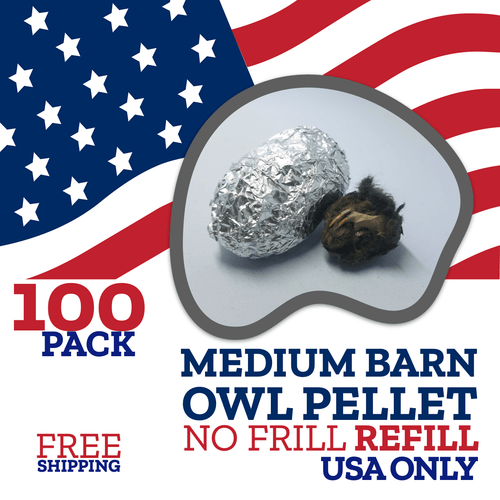|
Chemicals
Chemicals tend not to kill owls directly. Instead, what occurs is known as bioaccumulation. This means that animals at the lowest level of the food chain will ingest low levels of a chemical in their environment, then when the animals above them in the food chain eat them, they also ingest the chemicals.
Each level of the food chain ingests more and more of the chemical until you reach the top. This high level of toxicity that has accumulated in an owl’s system through the prey they eat is what ultimately ends up killing them.
Secondary poisoning is also a frequent occurrence. This means that when an owl eats prey that has ingested a chemical, that chemical may break down within the owl’s body into another chemical that will poison it.
Lead
Lead bullets and fishing tackle introduce a huge amount of lead to various environments. This poses a huge problem for all animals within the food chain. Raptors, especially, get hurt by the effects of lead poisoning. Many raptors are scavengers, and when they feast on a carcass of an animal that was killed with lead bullets, they also get poisoned by it.
A raptor’s digestive system breaks down the lead quickly, which means it gets into the bloodstream more quickly and easily. Even if it doesn’t kill the bird, it can cause damage to tissues and impact reproduction ability.
Human Activity
The continuous expansion of human habitat causes problems for wildlife that were living in the areas we’re quickly taking over. Logging not just destroys habitats that owls tend to live in, but it also gets rid of their nesting sites. This poses a big threat to owl families, who need a safe environment to raise their young.
Not only that, but as we take over owls’ environments, the way we set up our own homes can affect owls that are trying to live normally. Fences that aren’t clearly visible to owls can become a problem when they’re hunting. They can get tangled up in fences and outdoor decorations, which can cause injury or death.
It’s important to be aware of the threats that owls face because of our actions. That’s why it’s so important to teach others about how everything in our environment is connected to one another. Building an appreciation for it encourages us to keep it as healthy as possible.
We build appreciation through entertaining education, like our owl pellets. Encourage your family and friends to learn about and appreciate the world around them through a pellet dissection activity. Get yours here.
|



